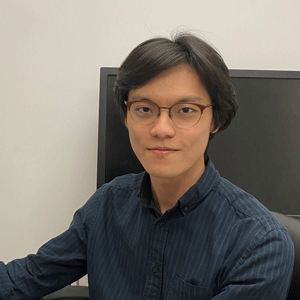
Arthur Hoi Hin Cheng – University of Toronto
Scientific publication:
Cheng AH, Bouchard-Cannon P, Hegazi S, Lowden C, Fung SW, Chiang CK, Ness RW, Cheng HM. SOX2-Dependent Transcription in Clock Neurons Promotes the Robustness of the Central Circadian Pacemaker. Cell Rep. 2019 Mar 19;26(12):3191-3202. doi:10.1016/j.celrep.2019.02.068. Link to publication
Laboratory website:
https://utmchenglab.wordpress.com/
Arthur Hoi Hin Cheng lives in Mississauga, Ontario.
Stem cell gene moonlights in the brain’s circadian clock
Most aspects of behaviour and physiology exhibit approximately 24-hour rhythms that align with the day-night cycle. Perturbation of this circadian clock constitutes a risk factor for myriad diseases and disorders, including obesity, diabetes, cardiovascular disease, cancer, neurodegeneration and psychiatric disorders. Conversely, many diseases contribute to circadian disruption. An important step towards combatting the adverse health effects of disrupted rhythms is to understand how the circadian clock is normally regulated.
In the brains of mammals, these biological rhythms are coordinated by a central circadian pacemaker in the hypothalamus, known as the suprachiasmatic nucleus (SCN). A new study by Arthur Hoi Hin Cheng, working in the laboratory of Dr. Hai-Ying Mary Cheng at the University of Toronto, reveals that SOX2 — a “stem cell gene” that is also expressed in the clock neurons of the brain —promotes robust and coherent circadian behavior in mice.
To investigate the role of SOX2, the researchers used RNA-sequencing to study rhythmic gene expression in the SCN, which constitutes a first of its kind for the field of circadian biology. They identified 233 genes that were differentially expressed in mice lacking SOX2. Of these genes, one called Period2 is a core clock gene. Further experiments showed that SOX2 directly controls the transcription and expression of this important clock gene.
This not only helped them to gain a deeper mechanistic understanding of circadian clock regulation, but also positioned them to develop new strategies that leverage the circadian system to promote better physical and mental health. The next-generation sequencing dataset produced enables other chronobiologists to identify novel molecular players of the timing process and to develop promising new drug targets to treat clock-associated diseases and conditions.
Arthur Hoi Hin Cheng
Arthur Hoi Hin Cheng performed this work during his PhD studies in the laboratory of Dr Hai-Ying Mary Cheng at the University of Toronto. He is the first author of the publication, performed most experiments, data analysis, prepared figures and contributed to manuscript writing. Arthur Hoi Hin Cheng also spearheaded three rounds of manuscript revision.
